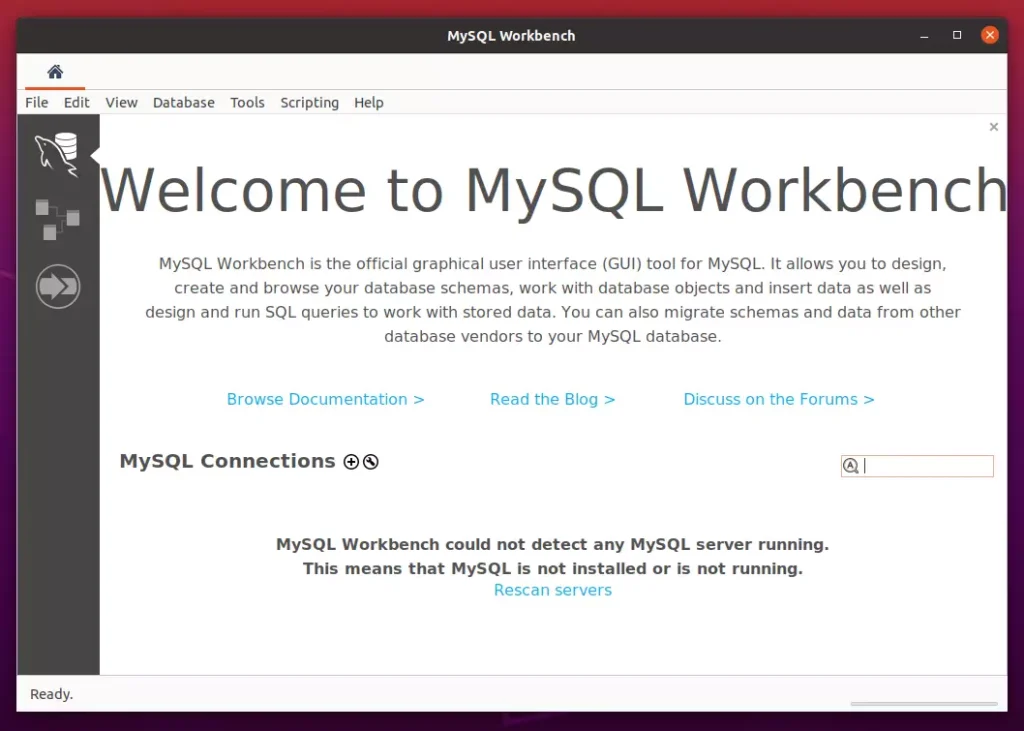This post shows students and new users how to install and use MySQL Workbench on Ubuntu Linux. MySQL Workbench can manage MySQL databases from a local or remote machine.
It supports managing databases and users, creating and running SQL queries, configuring servers, taking backups, performing migrations, and much more. Whether you’re a new user or a professional, MySQL Workbench makes managing MySQL databases easy.
Workbench will also work with MariaDB databases since MariaDB is a drop-in replacement for MySQL. You should be able to install Workbench and use it on other Linux distributions, not just Ubuntu Linux.
Also, for students and new users learning Linux, Ubuntu Linux is the easiest place to start learning. Ubuntu is the modern, open-source Linux operating system for desktops, servers, and other devices.
Ubuntu is a great Linux operating system for beginners.
To start installing MySQL Workbench on Ubuntu Linux, follow the steps below.
How to install MySQL Workbench from Snap
Installing MySQL Workbench on Ubuntu is a pretty straightforward process. The workbench package can’t be found in the Ubuntu repository starting with Ubuntu 20.04.
You can use Snap package management to install the community version. Simply run the commands below to install Snap’s MySQL Workbench community version.
sudo snap install mysql-workbench-community
Once Workbench is installed, you can start it from the command line by typing mysql-workbench-community or clicking on the MySQL Workbench icon from Activities -> Overview -> MySQL Workbench.

To connect to a database server, click Database ==> Connect to Database. You can add a new connection by clicking the circled plus sign ⊕ next to “MySQL Connections.”
Set up a new connection, type in the database server credentials, and test the connection. Once everything is entered correctly, it should be added and ready to use.
MySQL and MariaDB using root passwords
MariaDB and MySQL servers have the root user set to use the auth_socket authentication method by default.
The auth_socket plugin authenticates users that connect from the local host through the Unix socket file. You can’t authenticate as a root by providing a password.
However, you can turn off the auth_socket plugin using the SQL commands below. If you do, you must type the root password to log on.
MySQL:
ALTER USER 'root'@'localhost' IDENTIFIED WITH mysql_native_password BY 'type_strong_password_here';
MariaDB:
UPDATE mysql.user SET plugin = 'mysql_native_password' WHERE User='root';
You should be able to log in with the root password.
Conclusion:
- MySQL Workbench is a powerful tool for managing MySQL and MariaDB databases.
- The installation process on Ubuntu is simple and can be done through Snap.
- Users can create and manage databases, users, and run SQL queries efficiently.
- Auth_socket authentication can be modified to use password authentication for root users.
- Ubuntu provides an accessible platform for beginners to start learning Linux and database management.
- Overall, MySQL Workbench enhances productivity and simplifies database interactions for both new and experienced users.

Leave a Reply